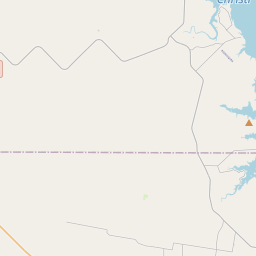Lagarto Cemetery
Historical marker location:






In the early 1870's an unknown traveler died at the home of Samuel and Mary Beall, proprietors of a general store in the ranching town of Lagarto. The Bealls buried the man at a site on their property. In 1876, land surrounding the gravesite was formally set aside as the Lagarto Cemetery when Sam and Mary Beall sold two acres of their land to J.W. Ramey, Cornelius Clay Cox, and T.P. McNeill, trustees for the Lagarto Community Cemetery. The grave of the unknown man is identified only by a caliche rock cover, as are two other burial sites in the cemetery. The oldest marked grave, that of two year old Isabel Harrison, is dated October 12, 1876. Others buried here include Charles H. Fusselman (1866-1890), who was shot in Presidio county while serving as a Texas ranger, and John Pollan (1808-1890), who fought in the Texas war for Independence. Although the population of Lagarto declined after the railroad bypassed it in 1887, its citizens have continued to use the cemetery since the 1870's. Descendants of the town's pioneers still live in the area, which has become the site of development along Lake Corpus Christi
As one of the most visible programs of the Texas Historical Commission (THC), historical markers commemorate diverse topics in Texas history, including: the history and architecture of houses, commercial and public buildings, religious congregations, and military sites; events that changed the course of local and state history; and individuals who have made lasting contributions to the state, community organizations, and businesses.
More history nearby
The discovery of oil in 1901 near Beaumont, Texas, sparked an oil boom that transformed the state's economy and led to the rise of the modern petroleum industry.
In the early 18th century, Spanish explorers began to venture into the area, searching for new territories to claim. It wasn't until the early 19th century when Anglo-American settlers arrived in the area. The Spanish government offered land grants to attract settlers, and many families moved to Live Oak County, establishing small ranches and farms. The region's fertile soil and mild climate made it ideal for agriculture, and cotton and cattle quickly became the mainstay of the local economy.
During the mid-19th century, Live Oak County witnessed significant growth and development. In 1856, the county was officially established, named after the live oak trees that were abundant in the area. By this time, more settlements had sprung up, and businesses flourished, including general stores, cotton gins, and blacksmith shops. The arrival of the railroad in the late 1800s further boosted the county's economy, allowing for easier transportation of goods and access to markets.
The early 20th century brought challenges to Live Oak County, as the agricultural sector faced disruptions due to drought, the Great Depression, and changes in farming practices. However, the discovery of oil in the early 1940s brought a significant economic boom, transforming the county once again. Oil companies flocked to Live Oak County, bringing jobs and prosperity to the area. The oil industry continues to be a vital part of the county's economy to this day, alongside agriculture and other industries.
Live Oak County Timeline
This timeline provides a glimpse into the major events and milestones that have shaped the history of Live Oak County, Texas.
- 1846 - Live Oak County is established as a separate county by the Texas legislature.
- 1848 - The county is officially organized.
- 1850s - The population begins to increase due to the establishment of ranching and farming operations.
- 1881 - The San Antonio and Aransas Pass Railway is completed, connecting the county to other parts of Texas.
- 1890s - An oil boom occurs in the county, leading to increased economic activity and population growth.
- 1920s - The oil industry experiences a decline, leading to a decrease in population and economic slowdown.
- 1930s - The county is heavily affected by the Great Depression, with many residents facing unemployment and poverty.
- 1940s - The end of World War II brings an economic boost to the county as industries begin to recover.
- 1970s - The county experiences another oil boom, leading to increased oil production and economic growth.
- Present - Live Oak County remains a primarily rural area, known for its agriculture, oil production, and outdoor recreational activities.